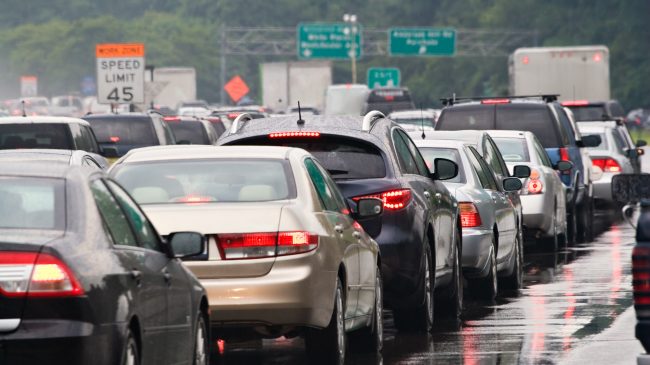The brilliant Steve Polzin asks this provocative question in his annual essay on transportation trends to watch in the coming year. I think he nails it on the head:
A great deal of the attention of the transportation planning community over the past decade or so has focused on things like improving walkability, advocating bike use, championing transit, and supporting travel demand management with the hopes of increasing use of alternative modes. While one will never know how things would have looked absent these efforts, the aggregate results are pretty disheartening. The September 2018 release of the 2017 American Community Survey data on work trip commuting suggests that past initiatives have not produced the results one might have hoped for. The image portrays the commuting mode shares and the changes in commuting modes between 2013 and 2017. Single occupant vehicle commuting has remained at dramatically high levels, 76.4%. Carpooling, transit, biking, and walking have lost ground in the past few years and in many cases over the long-term as well. The share of folks telecommuting or working at home has changed.
The dependence on auto travel is evidenced by the 2017 data, which indicates only 8.6% of U.S. households (about 5.9% of population) have no vehicles, down 0.5% since 2013 to the lowest level since annual data began being collected in 2005. Only 5.0% of households with workers have no cars. Moreover, in August 2018, vehicle sales data indicated that less than 30% of new vehicles were automobiles, with the growing majority of new vehicles sold being light trucks, SUVs, and vans.
There are perhaps some lessons in the persistence of these trends. While contemporary transportation planning initiatives might have helped some individuals and communities, maybe even have kept things from getting even worse, they’re not moving the needle in terms of the fundamental behavioral changes that will influence national measures of transportation performance with respect to infrastructure needs, energy use, air quality, public health, safety, etc.
A frustrated planner might proffer that we’re just nibbling at the edges. We do enough to take credit for good intentions and are probably helping some local areas, but we are not doing nearly enough to really make a difference at the national scale. Our levers of influence are simply inadequate. Education and communications are fine, and “providing choices” is certainly a prerequisite to having an impact but we’re not doing enough or the right things to really make a difference. Decision-makers and their constituents are simply not tolerant of the types of initiatives that really make a difference. Meaningful changes in behavior need to be driven with meaningful changes in the factors that influence travel. Dramatic increases in travel costs—not pennies and nickels per gallon but multiple dimes and quarters—could be required before travelers will change behaviors in significant numbers. But that hasn’t worked so well in France lately.
Those with a more customer-centric bent might suggest a different tack. Rather than trying to convince the public of travel and location choices deemed by planners to be better, perhaps planners should surrender to the rather overwhelming evidence that individuals highly value the inherent flexibility of door-to-door on-demand travel choices. The robust increases in auto ownership and the rather stunning success of ridehailing services have shown consumers highly value convenience and flexibility in their travel choices.
If one looks at the real improvements in transportation and mobility over the past few decades, technology has been the impetus for change. Be it safety, energy efficiency, reduced emissions, improved comfort, reliability and affordability, or improved access to mobility options like Uber and Lyft; improved technology has been the most significant basis for improvements. Maybe policies and investments should strive to enhance the pace of development and deployment of technologies that enhance mobility or offset the consequences of vehicles rather than attempting to coax behavior changes in the absence of the political will to implement measures powerful enough to change behavior.
In other words, maybe policymakers should stop getting in the way of progress, seek to improve mobility, think about how to leverage the strengths of new technologies, and try to address externalities directly rather than through blunt and crude (and failed) attempts to modify behavior.

